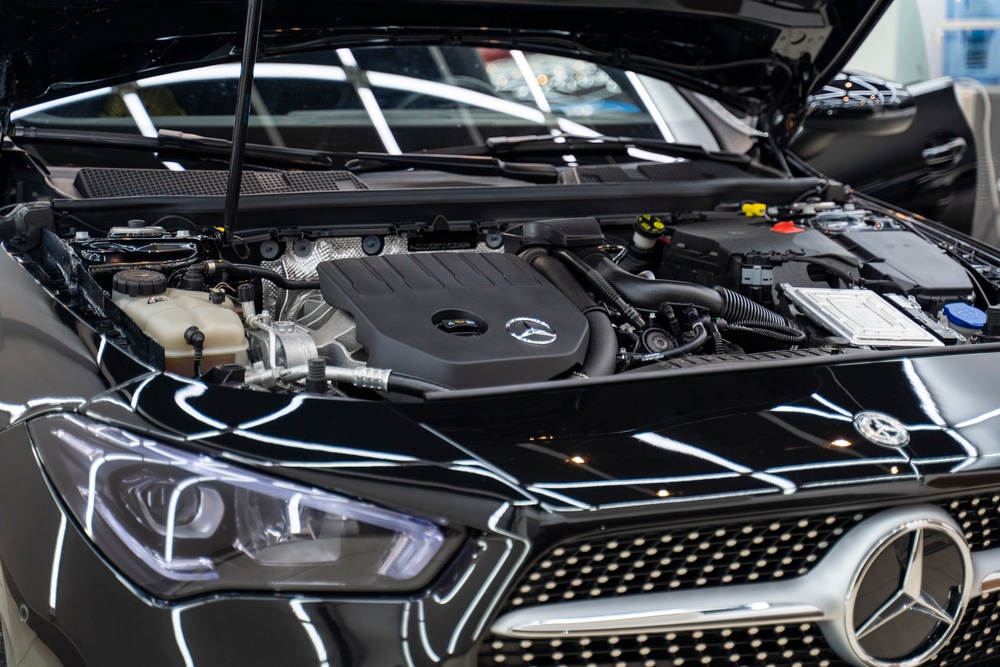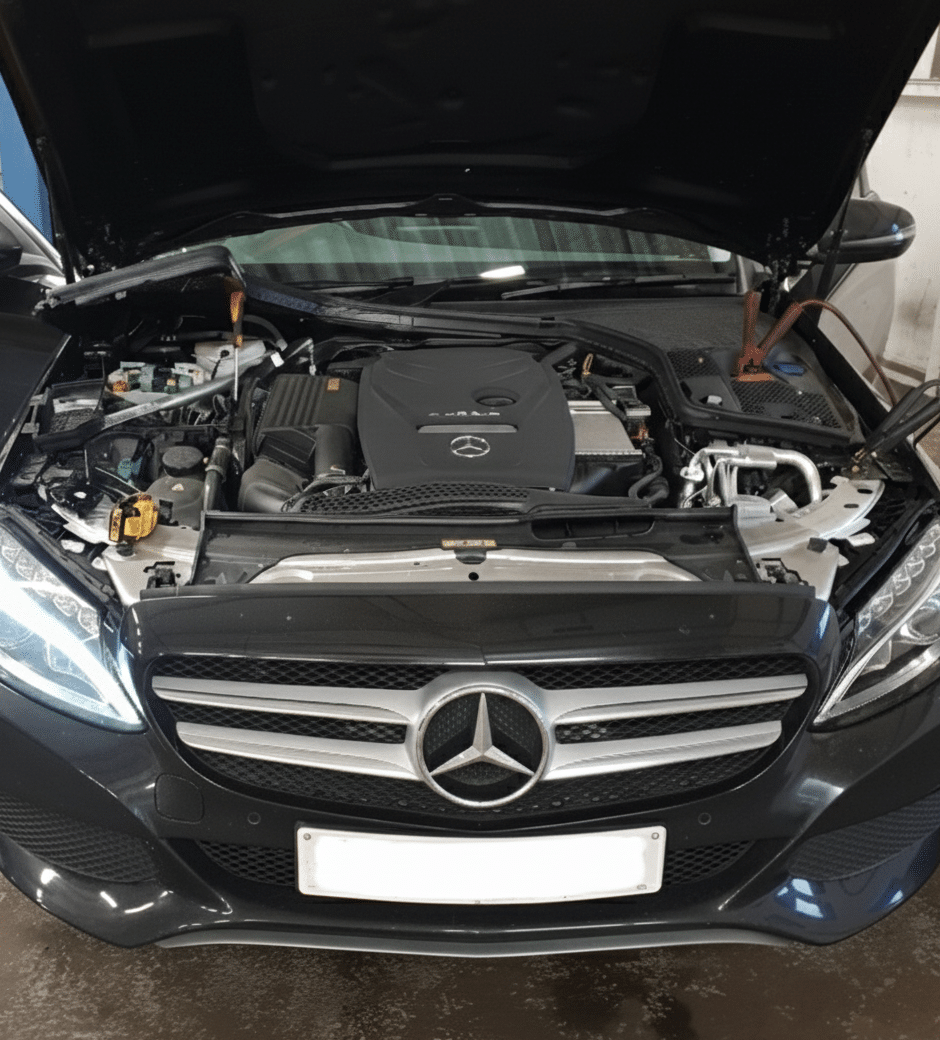What to do if your Range Rover Sport goes into Limp Mode
Designed to combine luxury, performance and style, the Range Rover Sport excels at all three. However, these vehicles are imperfect; sometimes, they break down and cause problems. Our client recently visited our workshop for diagnosis and repair after experiencing the dreaded limp mode. Occasionally, the meticulously crafted machines malfunction, but luckily, we can fix them.
Limp mode is activated when a severe engine malfunction occurs. You cannot drive at high speeds in this mode, and your power output is limited. Furthermore, if the car is in limp mode, it will not allow you to exceed 30-50mph and notify you that you need to take your Range Rover to a specialist garage immediately.
When a recent client entered our Langport garage, they immediately informed us that they were experiencing poor performance and had a warning light illuminated on the dashboard.
Read on to learn more.

Troubleshooting the Issue
Our experts immediately noted something amiss when the Range Rover entered our workshop. The engine management light was illuminated, and the vehicle was in limp mode and had low power.
Using our 15-step diagnosis procedure that we always use for our expert repairs, our specialist team dug deeper into the possible causes.
In this way, we can understand the problem quickly and determine the root cause, leaving nothing to chance. Our first step was to tap into the engine control unit using a specialist diagnostics machine. By doing this, we can identify fault codes indicating why the vehicle is in limp mode.
This diagnostics test revealed the following fault code:
- P006A-00 manifold absolute pressure – mass air flow correlation
As soon as our expert technician saw this, they knew exactly what to check – the mass air flow sensor. The mass air flow sensor is attached to the inlet manifold (or throttle body) in the engine bay. The sensor is very delicate and must be handled and maintained carefully. The airflow rate is determined by the mass air flow sensor, which is a part of the engine management system.
By measuring the airflow, the Land Rover engine control module determines how much fuel to inject into the cylinders to maximise efficiency. Let’s say the airflow sensor detects insufficient airflow. As a result, the vehicle will adjust its fuel injection in order to compensate, leading to limp mode – precisely what our customer experienced.
Our expertise and experience shone through at this point. Next, utilising advanced diagnostic equipment, our technician examined live data for the mass air flow sensor in the vehicle computer.
After completing our 15-step process, our Land Rover technician visually examined the throttle flap and housing for any signs of damage. Upon finding no signs of wear on the throttle body or flap, our technician found the root cause and why the Range Rover entered limp mode.
There was a leak in the induction system.
Further investigation revealed that air was leaking from the inlet manifold because of an issue.
The inlet manifold is responsible for channelling air from the outside into the engine to be mixed with fuel and ignited. Its careful design ensures maximum air flow and filtering efficiency. In order to optimise fuel efficiency, you need to ensure that the engine receives efficient airflow; leaks can result in expensive repairs and reduce fuel efficiency.
Fixing the Problem at Shires Garage
In order to diagnose the mass air flow fault code, our technician performed thorough tests.
A replacement was needed for the right side inlet manifold.
This new manifold would switch off any fault codes since leaks would be eliminated. Thus, the Range Rover Sport engine receives optimal airflow.
We contacted the owner of the Range Rover Sport as soon as our technician knew what repairs were required and explained everything we did to diagnose the issue. After that, we outlined the steps needed to resolve the mass air flow sensor fault code to the client and obtained their approval before proceeding with the repair.
In response to the client’s approval, our technician immediately sourced the replacement part.
We only use genuine or recommended parts at Shires Garage. We were able to source a replacement right inlet manifold the same day due to our extensive parts suppliers and close network.
Repairs were performed as follows:
- Accessing the faulty inlet manifold requires removing the surrounding parts.
- Identify the faulty right-hand inlet manifold and remove it.
- Install the replacement inlet manifold carefully.
- Assembly of all components removed from the engine bay.
Our technician then cleared the fault code with advanced diagnostic equipment before taking the customer’s vehicle for a test drive.
As a result of the test drive, our technician was pleased to discover that the fix had worked. The vehicle was not in limp mode, there were no warning lights on the dashboard, and the live data from the mass air flow sensor showed regular readings.
We always ensure there are no further issues and that our customer’s vehicle won’t have an expensive repair further down the road due to a related problem. At Shires Garage, we go above and beyond for our customers, which is why we have such an excellent track record for customer repair work.
On the same day, the customer was able to pick up and drive their vehicle away. Only a few main dealerships can do this due to the long lead time for parts and the fact that they may have a large number of cars in for repair, which are subject to warranty claims.
In the dealer’s hands, the customer’s Range Rover Sport would have been significantly delayed and would cost approximately 40% more to repair.
Final Thoughts
Drivers do not want to experience limp mode. Fortunately, our customer immediately came to us at Shires Garage. Within minutes of the Range Rover Sport entering our workshop, our technicians began diagnosing the problem.
Our 15-step diagnostics process revealed a fault code for the mass air flow sensor, which measures airflow into the engine. Further analysis revealed that air was leaking from the right-hand inlet manifold. Additional issues were investigated, and the tests concluded that a new right-side inlet manifold would resolve the issue.
When we contacted the customer and relayed the test results to them, they agreed to replace the inlet manifold as recommended.
As part of our commitment to customer service, our experts at Shires Garage ensure that our customers are always kept in the loop. Before any work is undertaken, we always inform the customer of the cost, the time and the work that will be required to repair their vehicle.
By using only genuine Land Rover parts, we ensure every customer receives the best repair possible.
Our repairs are always performed faster and at a lower price than those offered by the main dealer. Along with our clear communication, Shires Garage’s Land Rover experts are here to help. Contact us today if your Range Rover or any Land Rover model enters limp mode and needs repairs.



